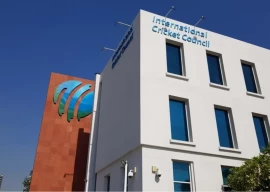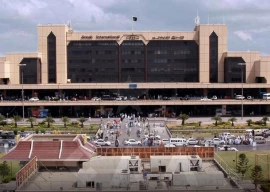
With an estimated eight million animals sacrificed yearly, the health and hygiene aspect of this important religious festival worries experts and citizens alike.
Where will the waste go?
Around one million animals are estimated to be slaughtered in Karachi alone on Eid this year. The Karachi Metropolitan Corporation (KMC) says that 140 vehicles and 250 employees of KMC would lift the waste at 27 main streets of the Karachi.
Medical experts believe that late lifting of waste and carcasses could also cause to spread airborne infections that specially effect chest, stomach, eyes and intestines.
But KMC’s plans seem far-fetched as the municipality employees are yet to be paid. “With unpaid staff, old vehicles and lack of other resources, how can the civic body ensure quick disposal of waste in a city spread over hundreds of kilometers?” asked Syed Zulfiqar Ali Shah, the president of KMC CBA Union.
Sources said the KMC and DMCs used to bury the waste at Mewa Shah Graveyard in the past. However due to the law and order situation, the DMS now plan to bury the waste in different locations. “It’s a serious hazard if the animal waste is not buried properly,” said General Secretary of Private Hospital Association Dr Ghafoor Shoro.
The Defence Housing Authority (DHA) Karachi’s officials said that the Clifton Cantonment board (CBC) has finalised all arrangements to ensure cleanliness within its administrative territorial limits.
In Rawalpindi, areas which come under the domain of cantonments boards, cleaning management is comparatively better. But areas where the actual population resides, there is a history of animal waste lying on the street for hours after sacrifices.
Islamabad’s sanitation directorate, Capital Development Authority (CDA) has set up all arrangements while three civic bodies including Rawalpindi Cantonment, Chaklala Cantonment and Rawalpindi solid waste management department have made arrangements.
Is my goat healthy?
There is a possible threat of the deadly Congo virus spreading, but civic bodies do not seem to take this seriously. The Congo virus which transmits through the bloods of sick animals is extremely dangerous for human health.
The World Health Organisation (WHO), with the help of the health department, is has launched a campaign to raise awareness about the deadly virus all over the country, a WHO official said.
Reports suggest that sick animals are being sold at makeshift cattle markets established around the country, right under the nose of the local administration and livestock department authorities.
In Peshawar, the provincial government has set up a cell to control the spread of the Congo virus. However, locals have reservations about its effectiveness.
Published in The Express Tribune, October 16th, 2013.
COMMENTS (1)
Comments are moderated and generally will be posted if they are on-topic and not abusive.
For more information, please see our Comments FAQ


1732003896-0/Zendaya-(1)1732003896-0-165x106.webp)
1731914690-0/trump-(26)1731914690-0-165x106.webp)
1732003946-0/BeFunky-collage-(70)1732003946-0-165x106.webp)
1732000275-0/Untitled-design-(9)1732000275-0-270x192.webp)


1732002687-0/Untitled-design-(11)1732002687-0-270x192.webp)

1732000005-0/Express-Tribune-(2)1732000005-0-270x192.webp)





1731749026-0/Copy-of-Untitled-(3)1731749026-0-270x192.webp)






This article fails to take into account the poor hygienic condition of our cities even without Eid. There is no effective system to check the health of the animals that are slaughtered for meat Nobody knows that the meat that is sold on daily basis is health or not. So why blame poor hygiene and poor animal health on Eid ul Azha?? Only one thing comes to mind that this is done for anti-Islamic purposes. Shame on Express Tribune for printing such a pointless and misleading news item..